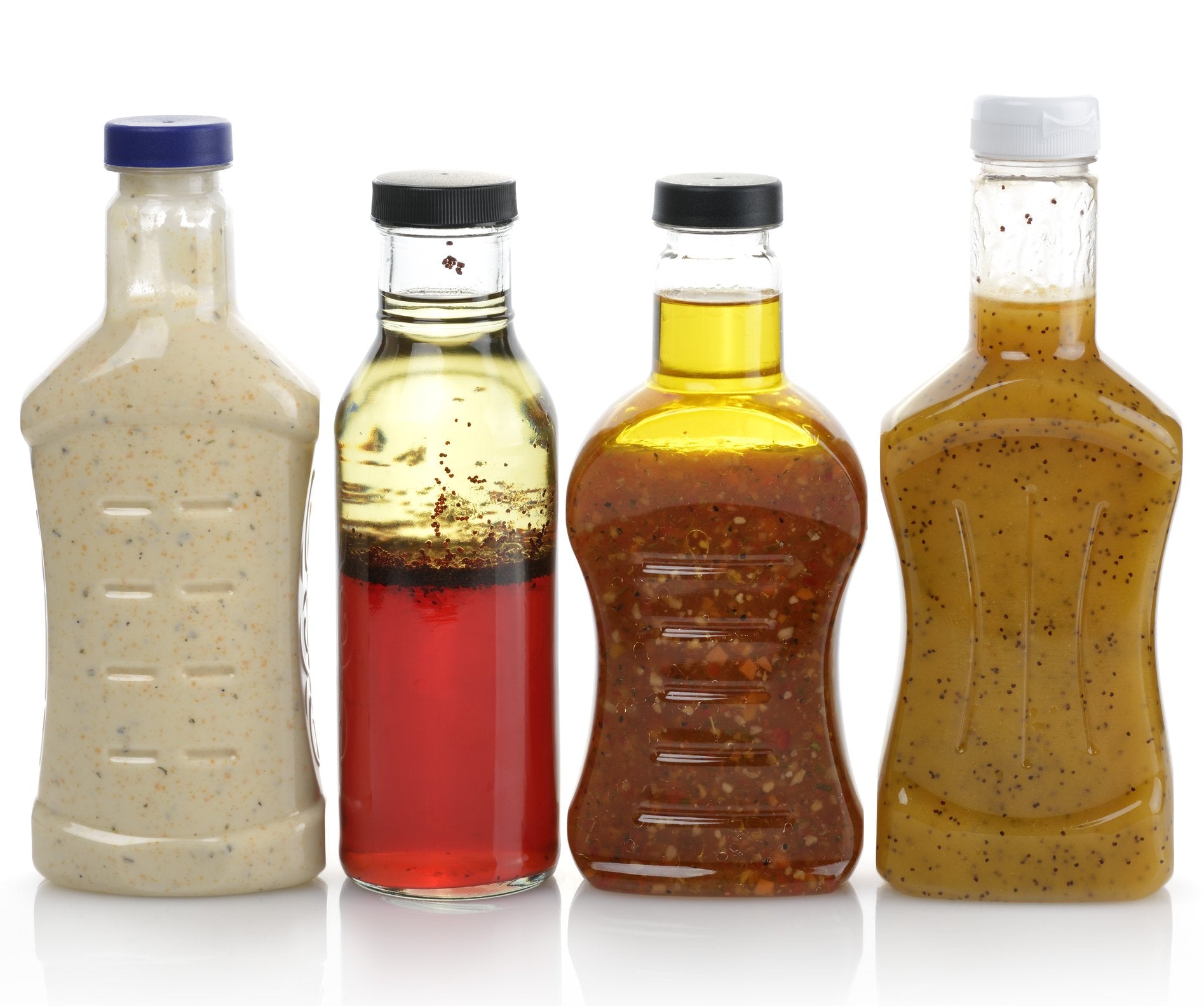ChatGPT said: The science behind emulsifiers in sauces
The Essential Advantages of Emulsifiers for Smooth and Stable Combinations
Emulsifiers are vital in creating smooth and stable combinations across different markets. They lower surface tension in between immiscible fluids, causing boosted structure and overall sensory experiences. In food and cosmetics, their duty extends past simple blending; they likewise boost shelf life and item stability. Understanding the types and applications of emulsifiers exposes their significance in formula processes. The nuances of their performance warrant additionally exploration.
Understanding Emulsifiers: The Science Behind the Blend
Emulsifiers are typically overlooked in everyday cooking and food production, they play an important role in supporting blends that would certainly or else divide. Emulsifiers are compounds that lower surface tension between two immiscible fluids, such as oil and water. They have both hydrophilic (water-attracting) and hydrophobic (water-repelling) residential properties, permitting them to interact with both phases. This special characteristic enables emulsifiers to develop a secure user interface, stopping the separation of fluids and fats.
Usual instances of emulsifiers include lecithin, usually acquired from eggs or soybeans, and mono- and diglycerides. These materials produce an uniform appearance in products like mayonnaise, salad dressings, and sauces. The science behind emulsifiers depends on their capacity to produce a stable emulsion, which is essential for accomplishing desirable food top quality and service life. Comprehending the feature of emulsifiers is crucial for food scientists and culinary professionals going for constant results.
Culinary Applications: Enhancing Taste and Structure
Emulsifiers significantly boost culinary applications by enhancing both flavor and texture in a variety of foodstuff (emulsifiers). They play a vital function in creating secure solutions, which are important for sauces, dressings, and mayo. By allowing the even distribution of fats and water, emulsifiers guarantee that tastes are harmonious and well-blended, boosting the general taste experience
In baked goods, emulsifiers add to a better crumb framework and enhanced moisture retention, resulting in products that are appealing and soft. Furthermore, they aid extend service life by protecting against separation and preserving quality.
In dairy products, emulsifiers help in developing smooth appearances, necessary for products like gelato and cream cheese, where mouthfeel substantially affects customer pleasure. In general, making use of emulsifiers in cooking applications not only boosts taste accounts but additionally boosts the sensory experience of numerous food products, making them much more pleasurable and attractive.

Cosmetic Makes Use Of: Creating Elegant Formulas
When developing cosmetic products, the incorporation of emulsifiers is vital for achieving extravagant and smooth textures. These agents promote the blending of water and oil phases, creating steady emulsions that enhance product efficiency and individual experience. Emulsifiers not only improve the uniformity of creams and lotions yet also contribute to the general sensory attributes, enabling a much more positive application and feel on the skin.
Furthermore, emulsifiers play a vital role in the reliable shipment of energetic ingredients, ensuring that they continue to be uniformly distributed throughout the formulation. This consistent circulation enhances the item's effectiveness, supplying targeted advantages such as hydration, anti-aging, and defense. The right emulsifier can pass on a wanted thickness, avoiding separation and maintaining product stability over time. Ultimately, emulsifiers are important in creating high-quality cosmetic formulations that meet consumer expectations for luxury and efficiency.
Kinds of Emulsifiers: Natural vs. Synthetic
Understanding the distinctions between all-natural and artificial emulsifiers is necessary for formulators aiming to enhance cosmetic products. Natural emulsifiers, stemmed from plant or pet resources, consist of components like lecithin, beeswax, and various gums. They are usually preferred for their skin-friendly homes and biodegradability. In addition, they can enhance the sensory profile of formulas, supplying a more appealing appearance and feel.
On the other hand, artificial emulsifiers are chemically crafted to produce specific capabilities and stability. Common instances include polysorbates and stearic acid. These emulsifiers usually use premium efficiency regarding emulsification effectiveness and shelf-life stability. They might raise problems concerning skin level of sensitivity and environmental impact.
Inevitably, the option between synthetic and natural emulsifiers depends upon the wanted product attributes, formula goals, and consumer preferences, highlighting the importance of recognizing their special residential properties. emulsifiers.
The Role of Emulsifiers in Food Conservation

Tips for Using Emulsifiers Efficiently in Dishes and Products
When making use of emulsifiers in dishes and products, choosing the ideal type is necessary for attaining wanted results. Additionally, employing proper blending methods can substantially boost the security of emulsified combinations. Comprehending storage methods and rack life assures the long life and effectiveness of these emulsifiers.
Choosing the Right Emulsifier

Selecting the appropriate emulsifier can greatly boost the appearance and stability of a combination, as the ideal option depends on the details active ingredients and wanted result. Numerous elements influence this choice, consisting of the sort of fats or oils, the presence of water, and the target uniformity. For instance, lecithin is ideal for sauces and dressings, while xanthan gum functions well in gluten-free baking. In addition, the emulsifier's compatibility with other ingredients plays a substantial duty in accomplishing the wanted security. It is vital to take into consideration the temperature variety of the application, as some emulsifiers do far better under details problems. Eventually, recognizing the features of each emulsifier will bring about much more reliable formulation in items and recipes.
Proper Blending Methods
Using efficient mixing methods is vital for attaining excellent emulsification in products and dishes. First, it is essential to present emulsifiers slowly, allowing them to disperse evenly throughout the mixture. High-shear mixing methods, such as utilizing a blender or food processor or an immersion mixer, can improve emulsifier efficiency by damaging down fat blobs. Keeping a consistent temperature during mixing likewise help in attaining a secure solution, as fats and fluids can mix my link better when warmed. Furthermore, including ingredients in the proper order-- beginning with the liquid phase complied with by the fat stage-- makes certain also distribution. Mixing must continue until the desired uniformity is gotten to, staying clear of over-mixing, which can lead to splitting up. Correct methods eventually bring about smoother, extra secure solutions.
Storage and Service Life
The effectiveness of emulsifiers can greatly improve the high quality of combinations, correct storage space and focus to shelf life are crucial for preserving their efficiency. Emulsifiers should be kept in an awesome, completely dry atmosphere, away from straight sunlight and moisture, which can degrade their residential properties. It is recommended to maintain them in closed containers to avoid contamination and oxidation. Additionally, inspecting the expiration dates and adhering to advised storage standards can maximize their effectiveness. Normal evaluations of texture and stability in combinations can suggest whether the emulsifier is still operating efficiently. By adhering to these storage space techniques, users can ensure that their emulsifiers remain potent, leading to regularly smooth and steady mixes in recipes and products.
Regularly Asked Inquiries
Are Emulsifiers Safe for Individuals With Dietary Restrictions?
Emulsifiers can be secure for people with dietary restrictions, depending on their source and structure. It's necessary for those with allergies or particular dietary demands to carefully examine ingredient labels and talk to healthcare professionals.
Exactly How Do Emulsifiers Affect the Service Life of Products?
Emulsifiers boost the service life of items by maintaining combinations, stopping splitting up, and reducing spoilage. Their ability you can try this out to maintain uniformity helps guarantee durability, inevitably maintaining taste, appearance, and total top quality in numerous food items.
Can I Make Emulsifiers in the house?
Yes, self-made emulsifiers can be created making use of natural active ingredients like egg yolks, mustard, or honey. These options can assist blend oil and water, yet results might vary based on the details recipe and method made use of.
What Are Typical Emulsifier Allergies to Enjoy For?
Typical emulsifier allergies include reactions to soy lecithin, egg yolk, and dairy-based emulsifiers. Individuals with sensitivities might experience signs like hives, stomach distress, or breathing concerns upon direct exposure to these active ingredients in different food items.
Just How Do Emulsifiers Influence Nutritional Value?
Emulsifiers can affect nutritional worth by enhancing nutrition absorption and bioavailability - emulsifiers. However, excessive usage could bring about nutrition loss or discrepancy, potentially influencing health outcomes, specifically in processed foods where they are common
Emulsifiers substantially enhance cooking applications by boosting both flavor and appearance in a variety of food items. In milk products, emulsifiers help in developing smooth textures, important for products learn the facts here now like ice cream and lotion cheese, where mouthfeel significantly influences consumer pleasure. In the domain name of food preservation, emulsifiers play a significant role in keeping the top quality and shelf-life of various products. In items like salad dressings and sauces, emulsifiers help to maintain structure and flavor stability over time, ensuring that the food continues to be attractive to customers. Common emulsifier allergies include responses to soy lecithin, egg yolk, and dairy-based emulsifiers.